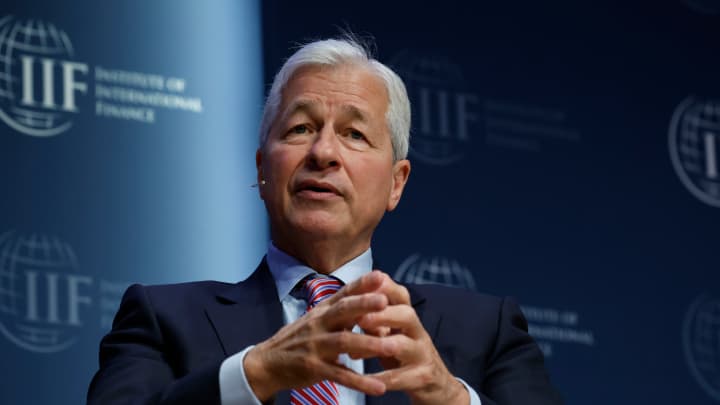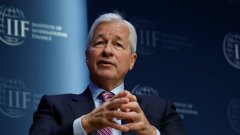
on Friday topped analysts' estimates for third-quarter profit and revenue as the bank generated more interest income than expected, while credit costs were lower than anticipated.
Here's what the company reported:
The bank profit surged 35% to $13.15 billion, or $4.33 a share, from a year earlier. That per-share figure includes 17 cents in securities losses and 22 cents in legal expenses. It wasn't immediately clear which items were included in LSEG's $3.96 a share profit estimate.
Revenue climbed 21% to $40.69 billion, helped by the stronger-than-expected net interest income. That measure surged 30% to $22.9 billion, exceeding analysts' expectations by roughly $600 million. At the same time, credit provisioning of $1.38 billion came in far lower than the $2.39 billion estimate.
JPMorgan's retail banking division saw profit surge 36% to $5.9 billion, fueled by higher net interest income and the of First Republic. Its corporate and investment bank saw profit slip 12% to $3.1 billion on declines in trading and advisory revenue.
JPMorgan shares gained 1.5% on Friday following the report.
CEO acknowledged that the biggest U.S. bank by assets was "over-earning" on net interest income and "below normal" credit costs that will both normalize over time. While surging interest rates caught some smaller peers off guard this year, causing upheaval among regional lenders in March, JPMorgan has navigated the turmoil well so far.
Dimon warned that while American consumers and businesses were healthy, households were spending down cash balances and that tight labor markets and "extremely high government debt levels" meant that may climb even further from here.
"The war in Ukraine compounded by last week's attacks on Israel may have far-reaching impacts on energy and food markets, global trade, and geopolitical relationships," Dimon said. "This may be the time the world has seen in decades. While we hope for the best, we prepare the firm for a broad range of outcomes."
The quarterly report comes after a period of uncertainty for U.S. banks.
Bank stocks last month after the Federal Reserve signaled it would keep interest rates higher for longer than expected to fight inflation amid unexpectedly robust economic growth. The 10-year Treasury yield, a key figure for long-term rates, jumped 74 basis points in the third quarter. One basis point equals one-hundredth of a percentage point.
Higher rates hit banks in several ways. The industry has been forced to pay up for deposits as customers shift holdings into higher-yielding instruments like money market funds. Rising yields mean the bonds owned by banks fall in value, creating unrealized losses that pressure capital levels. And higher borrowing costs tamp down demand for mortgages and corporate loans.
While smaller competitors have seen net interest income damaged by higher rates this year, JPMorgan continued to benefit from the rate environment.
The bank said Friday it now expects that net interest income will total this year, up from guidance of $87 billion in July. It was the fourth time the bank increased its guidance this year.
During a conference call with analysts, Dimon and CFO Jeremy Barnum criticized U.S. to increase capital levels at banks with at least $100 billion in assets. Unless modified, the plan would boost JPMorgan's required capital by 25%, or $50 billion, to the bank.
"A capital increase of this magnitude is disconcerting and there's a lot that does not make sense to us," Barnum said, adding that regulators have repeatedly said U.S. banks were already well capitalized.
Shares of JPMorgan have climbed 8.7% this year through Thursday, far outperforming the 19% decline of the KBW Bank Index.
and posted on Friday that topped expectations for revenue. and report Tuesday, and discloses results on Wednesday.




